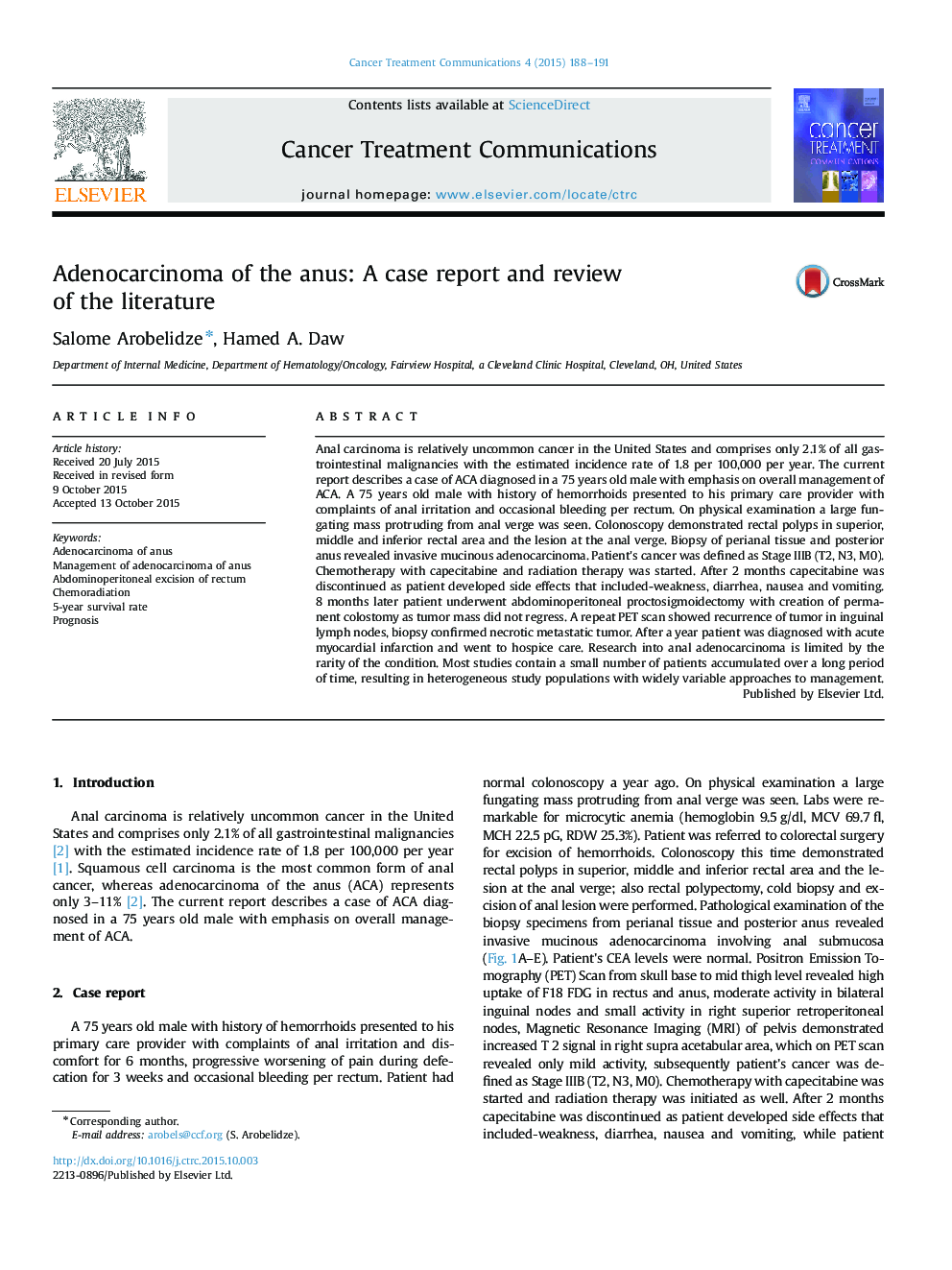| Article ID | Journal | Published Year | Pages | File Type |
|---|---|---|---|---|
| 6190303 | Cancer Treatment Communications | 2015 | 4 Pages |
Anal carcinoma is relatively uncommon cancer in the United States and comprises only 2.1% of all gastrointestinal malignancies with the estimated incidence rate of 1.8 per 100,000 per year. The current report describes a case of ACA diagnosed in a 75 years old male with emphasis on overall management of ACA. A 75 years old male with history of hemorrhoids presented to his primary care provider with complaints of anal irritation and occasional bleeding per rectum. On physical examination a large fungating mass protruding from anal verge was seen. Colonoscopy demonstrated rectal polyps in superior, middle and inferior rectal area and the lesion at the anal verge. Biopsy of perianal tissue and posterior anus revealed invasive mucinous adenocarcinoma. Patient's cancer was defined as Stage IIIB (T2, N3, M0). Chemotherapy with capecitabine and radiation therapy was started. After 2 months capecitabine was discontinued as patient developed side effects that included-weakness, diarrhea, nausea and vomiting. 8 months later patient underwent abdominoperitoneal proctosigmoidectomy with creation of permanent colostomy as tumor mass did not regress. A repeat PET scan showed recurrence of tumor in inguinal lymph nodes, biopsy confirmed necrotic metastatic tumor. After a year patient was diagnosed with acute myocardial infarction and went to hospice care. Research into anal adenocarcinoma is limited by the rarity of the condition. Most studies contain a small number of patients accumulated over a long period of time, resulting in heterogeneous study populations with widely variable approaches to management.
